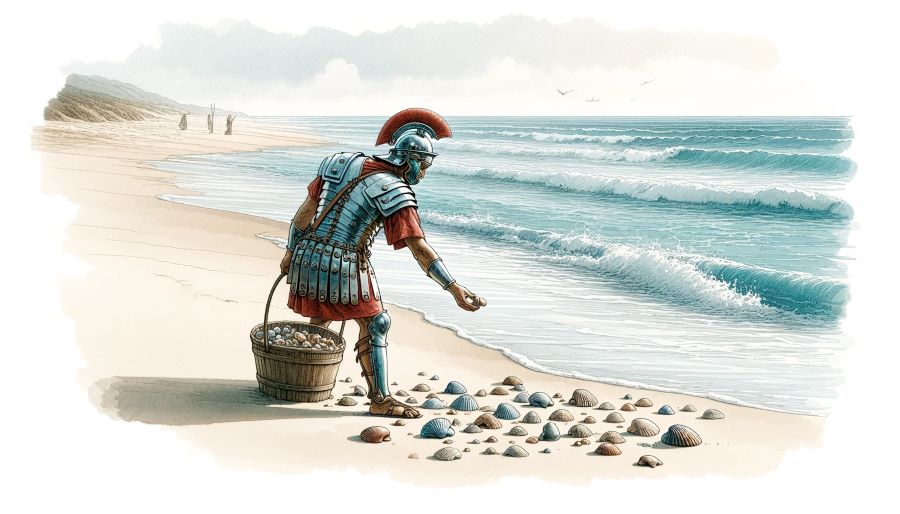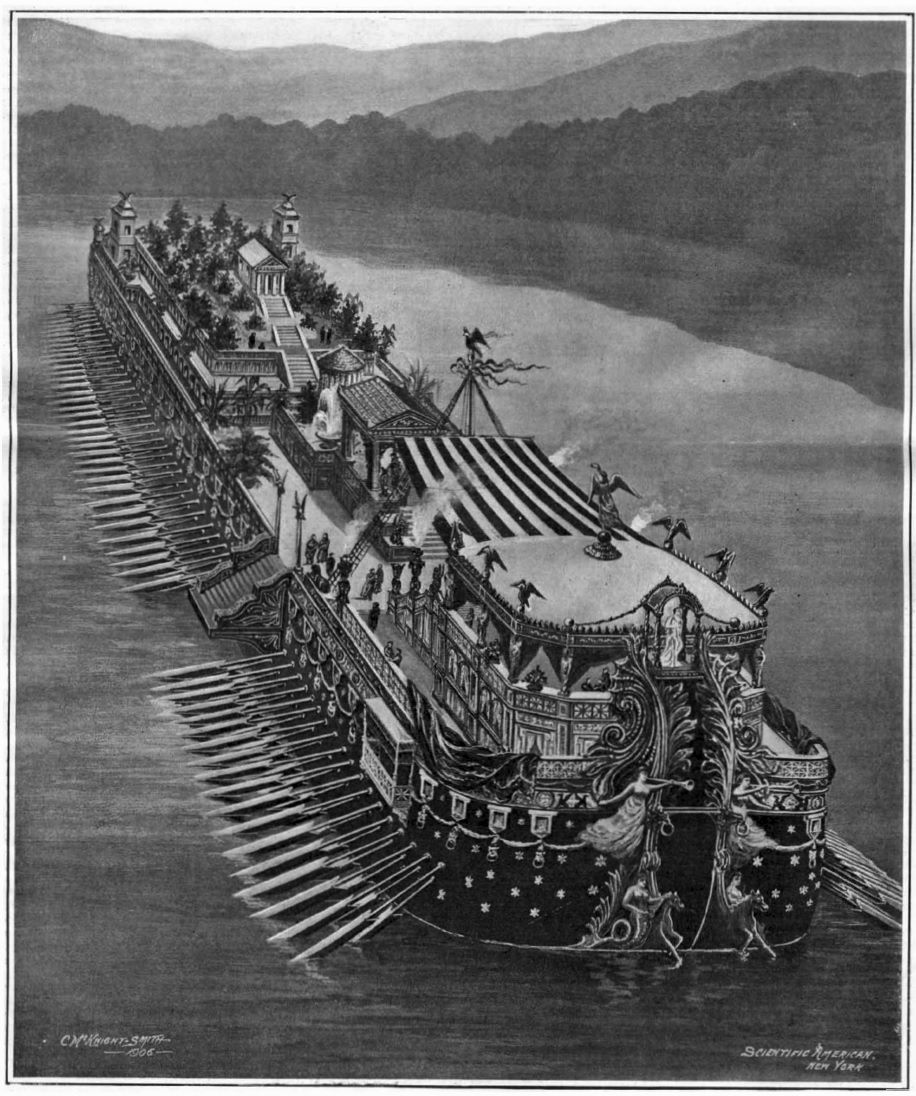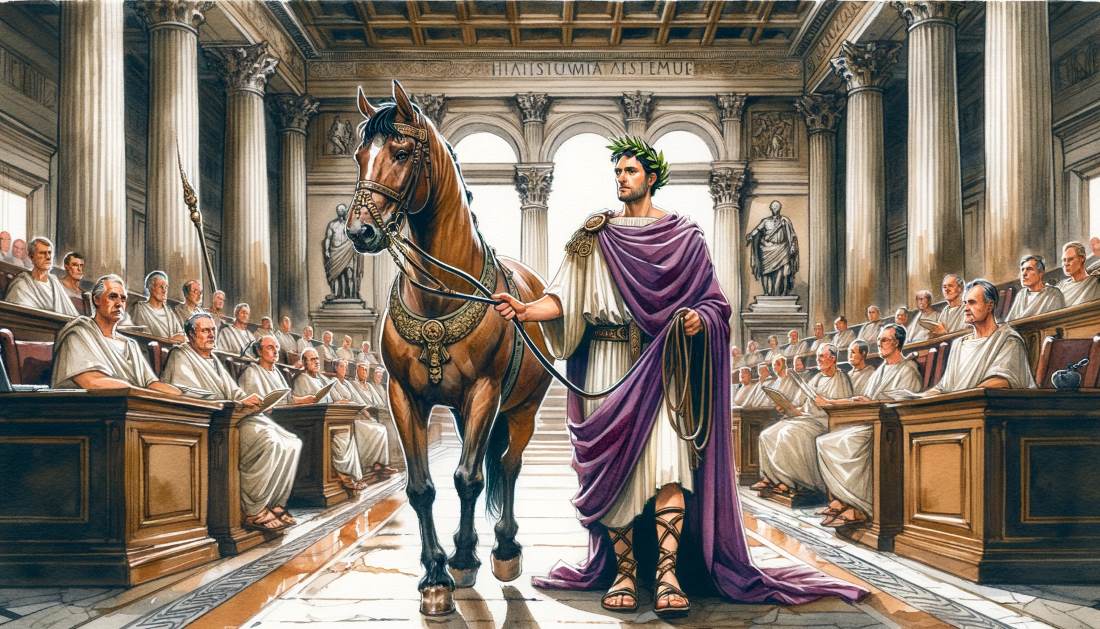Gaius Julius Caesar Augustus Germanicus, known as Caligula, ascended to the heights of Roman power at the tender age of 25. Grandson to Livia Drusilla, he embodied the dynastic ambitions of Rome’s most influential families. Caligula’s reign, which lasted from 37 AD until his violent death in 41 AD, started with promise and ended in notorious infamy. After suffering a severe illness early in his reign, Caligula exhibited signs of profound psychological disturbance, casting a long shadow over his tenure as emperor and leaving a legacy riddled with tales of madness and despotism.
Caligula’s nickname originated from his childhood among Roman legions, where he was dressed in a miniature soldier’s uniform, including the caligae, or heavy-soled military boots, which were typical for Roman legionaries. The soldiers affectionately called him “Caligula,” meaning “little (soldier’s) boot,” a moniker that stuck with him as he ascended to the throne, though in a vastly different context than his imperial rule.

In the following chapters, we will focus exclusively on the eccentricities and perceived madness that characterized Caligula’s rule. This examination is not a comprehensive biography of the emperor but a spotlight on the most controversial aspects of his governance.
The Imperial Horse Senator
The tale of Caligula’s horse, Incitatus, being appointed as a senator is one of the most outlandish anecdotes about the emperor’s supposed madness. Incitatus was not just any horse; by all accounts, Caligula lavished him with luxuries typically reserved for Rome’s elite. The horse lived in a marble stable, with an ivory manger, and was the recipient of jewelry and other decadent trappings of wealth. The story goes that Caligula was so enamored with Incitatus that he intended to make a farce of the senatorial proceedings by raising his horse to the high office of a consul.
Historians remain divided over the veracity of this account. Some suggest it was a clear indication of madness, while others argue it may have been an astute, if severe, critique of the Senate’s servility and ineffectiveness, demonstrating Caligula’s contempt for Roman political institutions by suggesting that even his horse could do a better job. Moreover, this account comes to us from sources who wrote after Caligula’s death and were likely influenced by the negative sentiment against him. It’s also plausible that such stories were amplified or invented by his enemies to discredit him posthumously. The lack of contemporary evidence means the truth behind this infamous story may be as elusive as the sanity it is meant to illustrate.
The Sea-Shell Collection Campaign
Caligula’s so-called sea-shell collection episode is another instance often cited to highlight his irrational behavior. According to historical accounts, during a military campaign, rather than engaging in battle, he commanded his troops to gather seashells from the beach as spoils of war. This peculiar command has been recorded as an act of madness, reducing a Roman army to what could be seen as child’s play on the shores. Some say it was meant to be a punitive humiliation for his soldiers, or perhaps an absurd whim of a deranged mind.

However, there is more to this story that suggests a possible political or symbolic interpretation. Some scholars argue that the seashell gathering was a calculated move by Caligula to mock his enemies or to demonstrate his power by having soldiers perform a senseless task at his mere caprice. It could also be that the “shells” were not literal but a metaphor for coastal defenses, as some translations propose. Nonetheless, the precise rationale remains a topic of debate among historians, who must rely on the biased accounts of ancient writers, often filled with a mixture of speculation and satire. The debate over this event’s significance reflects the broader challenges in understanding Caligula’s reign and the fine line between the man and the myth.
The Pleasure Barges Bridge
Caligula’s construction of a bridge using ships across the Bay of Baiae stands as another bewildering undertaking that has perplexed historians over the years. This engineering feat involved lining up ships side by side, anchoring them, and then layering the deck with sand to form a temporary causeway stretching over three miles. According to Suetonius, the bridge was not just a display of wealth and resources but also a rebuttal to a prophecy that said Caligula had “no more chance of becoming emperor than of riding a horse across the Bay of Baiae.” In a grand display of power, he was said to have paraded across this bridge adorned in the armor of Alexander the Great, demonstrating that the impossible was attainable for a Roman emperor.
While this extravagant project was certainly grandiose and arguably wasteful, some scholars propose that it may have been a practical exercise in military engineering, showcasing the logistical capabilities of the Roman navy. The construction of such a bridge would have been a clear testament to Roman engineering prowess and the might of the empire under Caligula’s command. Yet the lack of practical purpose for the bridge as anything other than a monument to Caligula’s vanity or a challenge to fate has led many to cite this project as a prime example of his eccentricities. Whether the act was born from egomania, political calculation, or sheer whimsy is still debated, but it remains a prominent example of Caligula’s controversial legacy.
Proclamations of Divinity
Caligula’s proclamations of his own divinity were a significant departure from Roman tradition and played a substantial part in the legacy of his alleged madness. He went to great lengths to establish his status as a living god, including the construction of a temple where he was worshipped and his statues were installed among those of Rome’s deities. Such actions were not only unprecedented but also deeply offensive to the Roman sensibilities of the time, which valued the republic’s traditions and the humility expected of its public servants, even those within the imperial family.

The emperor’s demand for divine honors echoed a practice more commonly associated with the Hellenistic monarchies to the east than with the Roman state’s stoic character. Some scholars contend that Caligula’s insistence on deification was a politically astute move intended to solidify his authority by adopting the eastern rulers’ god-king model. Yet, others see it as evidence of a delusional personality exacerbated by the absolute power he wielded. Regardless of the interpretation, these actions stirred great resentment among the Roman elite and contributed to the erosion of his support, ultimately playing a part in his assassination. The historical debate continues as to whether Caligula’s self-deification was a symptom of a mind unraveling or a conscious strategic ploy to manipulate the religious and cultural norms of his time for political gain.
Nemi Ships: Caligula’s Floating Extravagance
Caligula’s Nemi ships were the zenith of imperial grandeur and personal indulgence. While one served as a ceremonial vessel to Diana, aligning the emperor with the divine, the other was a testament to Roman luxury—a floating palace equipped with the finest amenities of the day, including marble floors and advanced plumbing. These ships were not designed for battle or transportation but for the pleasure and pomp of a ruler who wanted to demonstrate his power and divine favor.

The loss of the Nemi ships to a World War II bombing raid deprived the world of a tangible piece of Roman history, but it also cemented Caligula’s reputation as an emperor whose reign was marked by extraordinary excess. Historians remain split on whether these ships were mere symbols of decadence or shrewd political instruments to awe both the public and the elite. In either case, they underscore the extraordinary lengths to which Caligula went to project his image as a ruler with unmatched splendor and authority.
Caligula’s Assassination
Caligula’s extreme behavior and whims led to his downfall when he was assassinated by his own guards on January 24, 41 AD. The assassination, led by Cassius Chaerea, was the culmination of widespread discontent within the military ranks and the Senate. His death brought an end to a notorious and turbulent reign, highlighting the dangers of unchecked power and erratic leadership. It paved the way for his uncle Claudius to become the next emperor, offering Rome a chance at restoring stability after years of capricious rule.
Historical Challenge: Can You Conquer the Past?
Answer more than 18 questions correctly, and you will win a copy of History Chronicles Magazine Vol 1! Take our interactive history quiz now and put your knowledge to the test!

